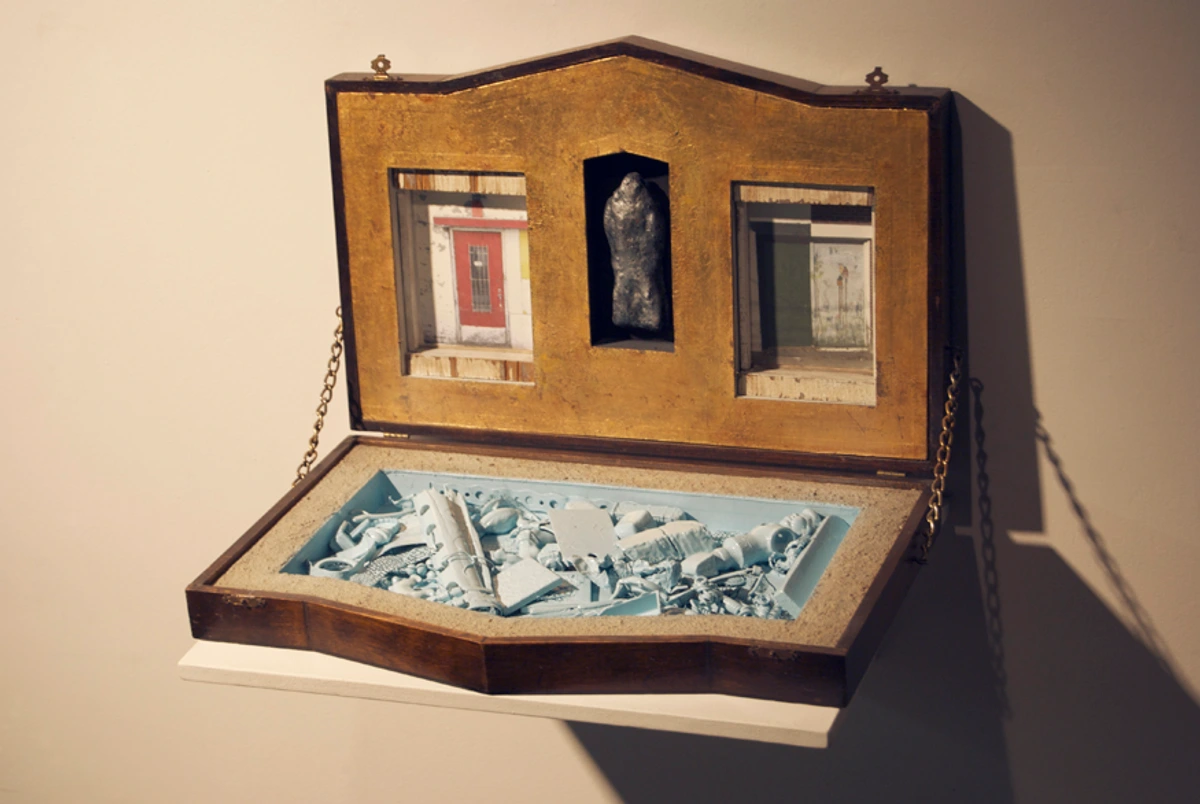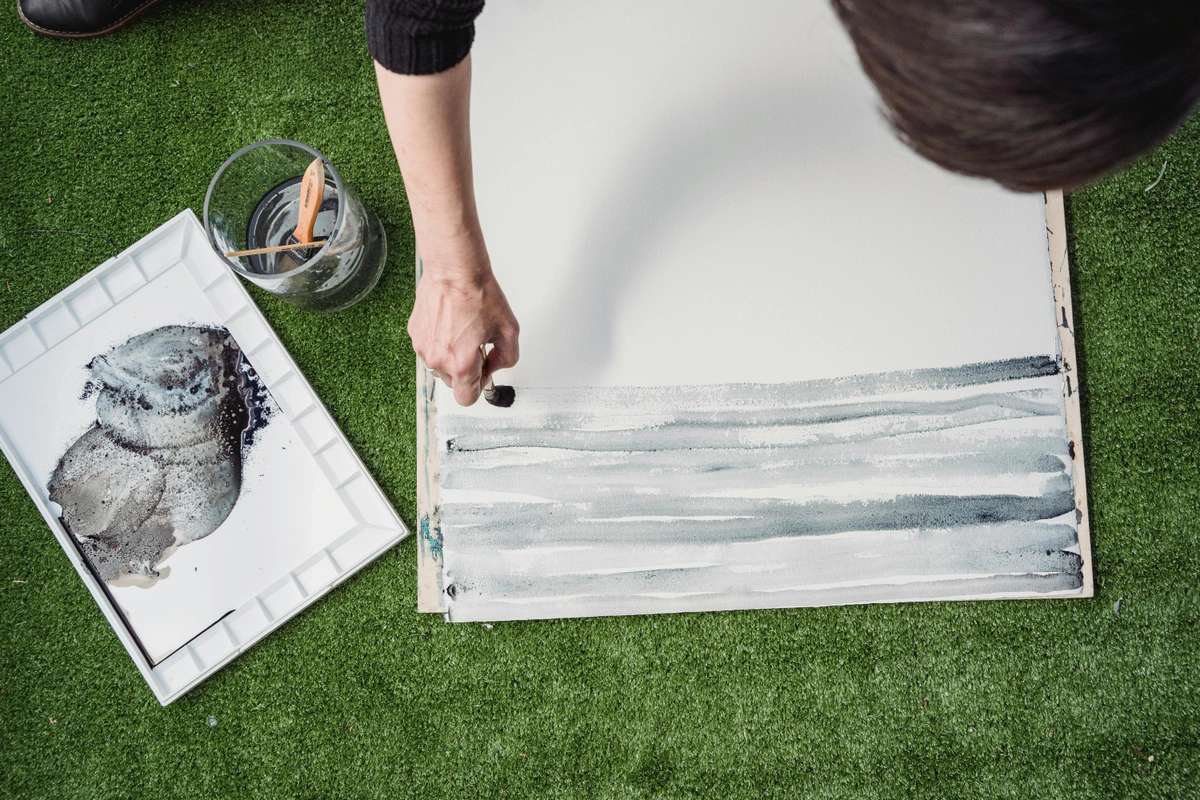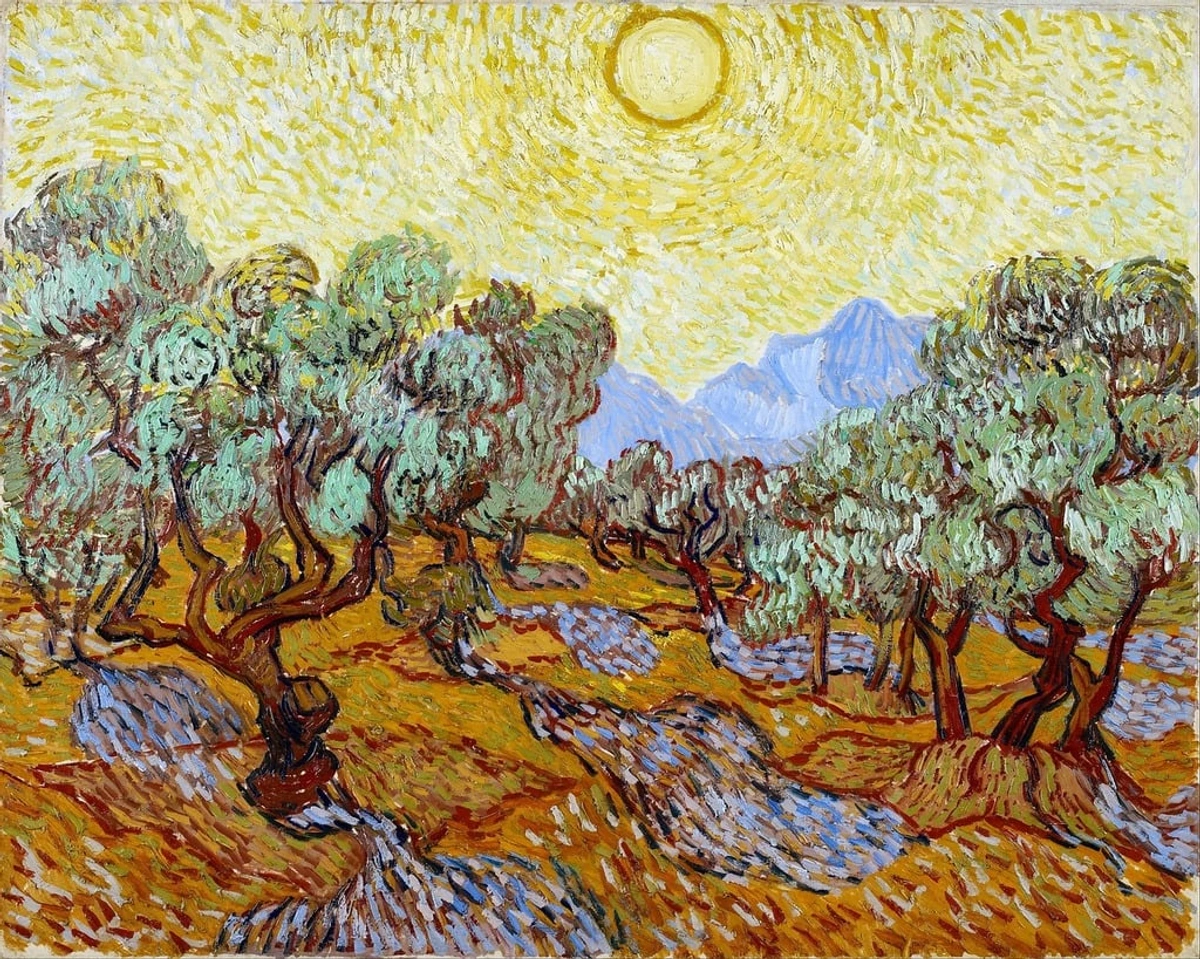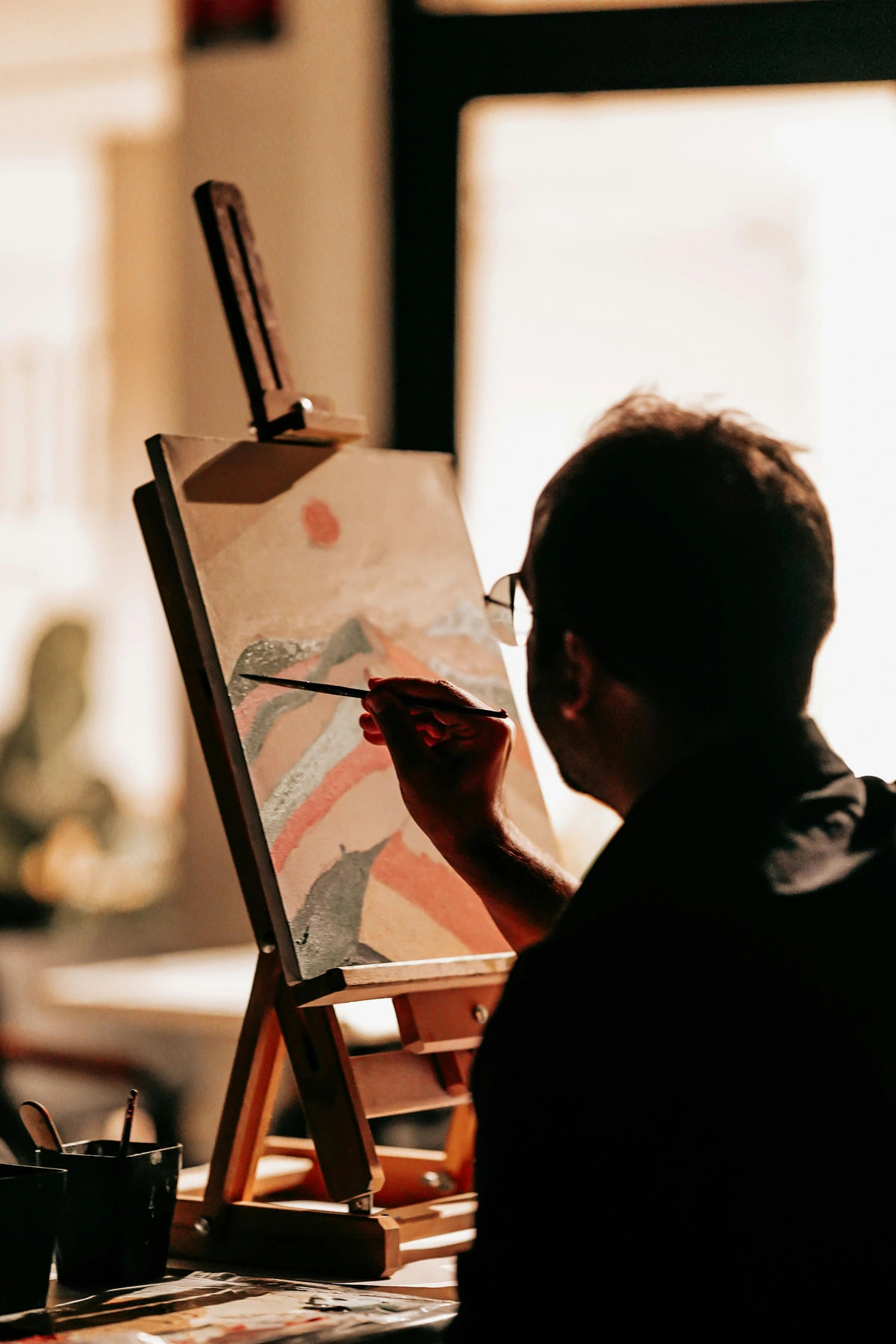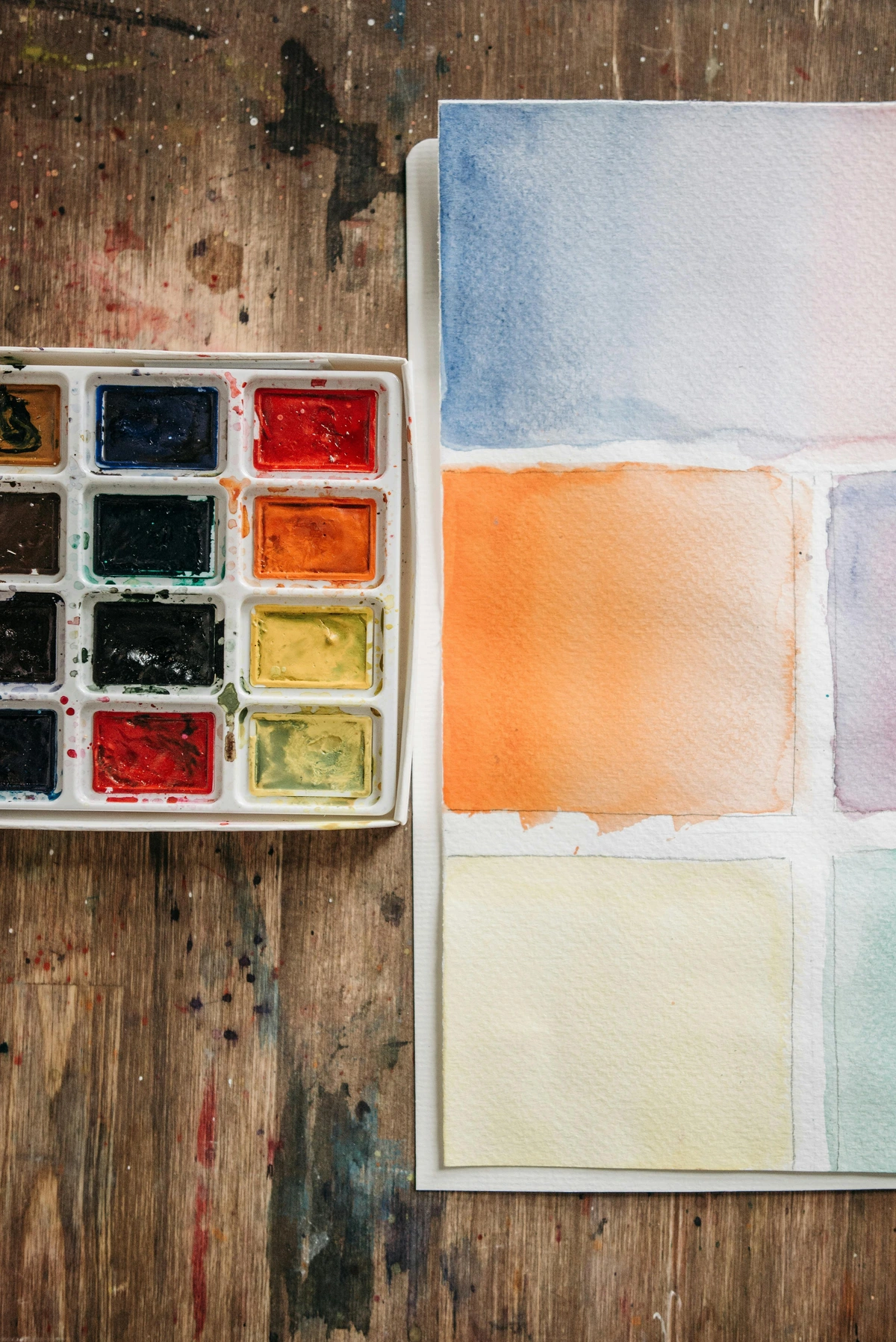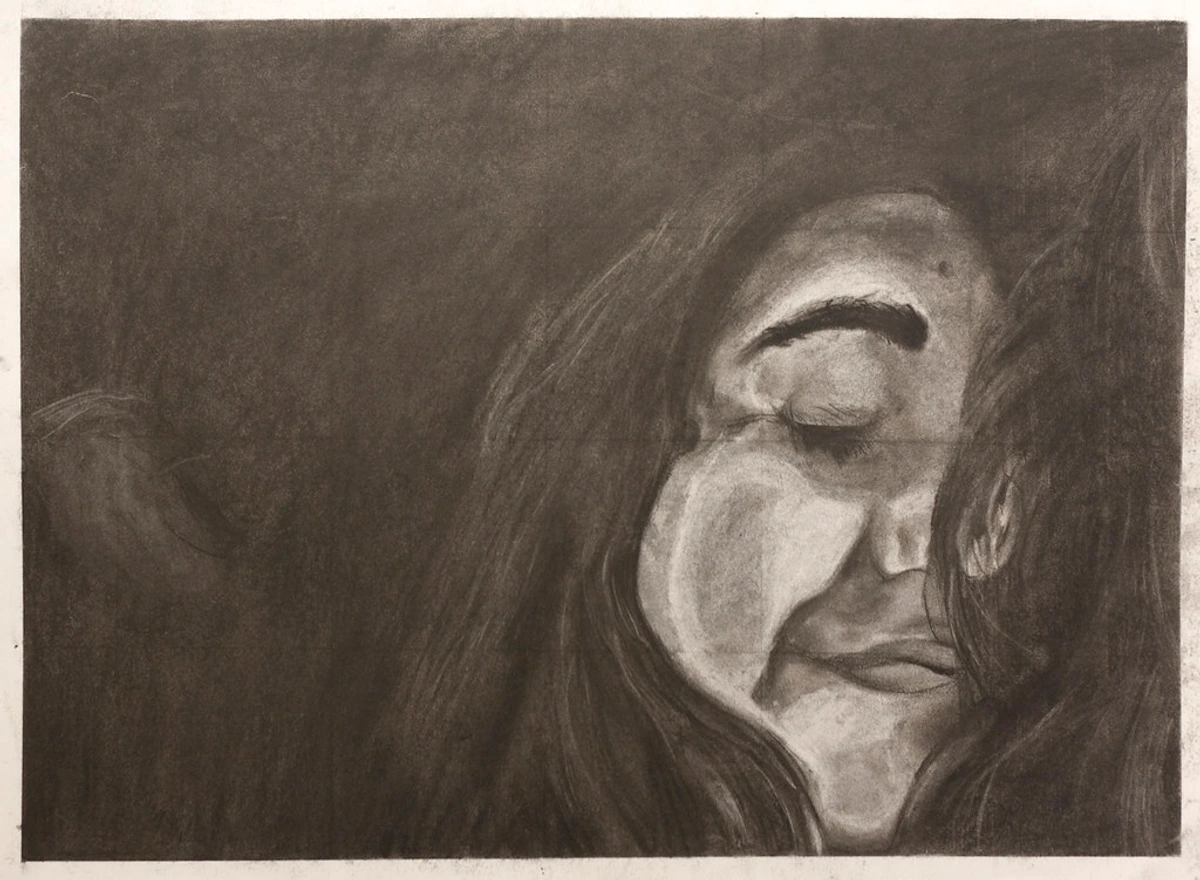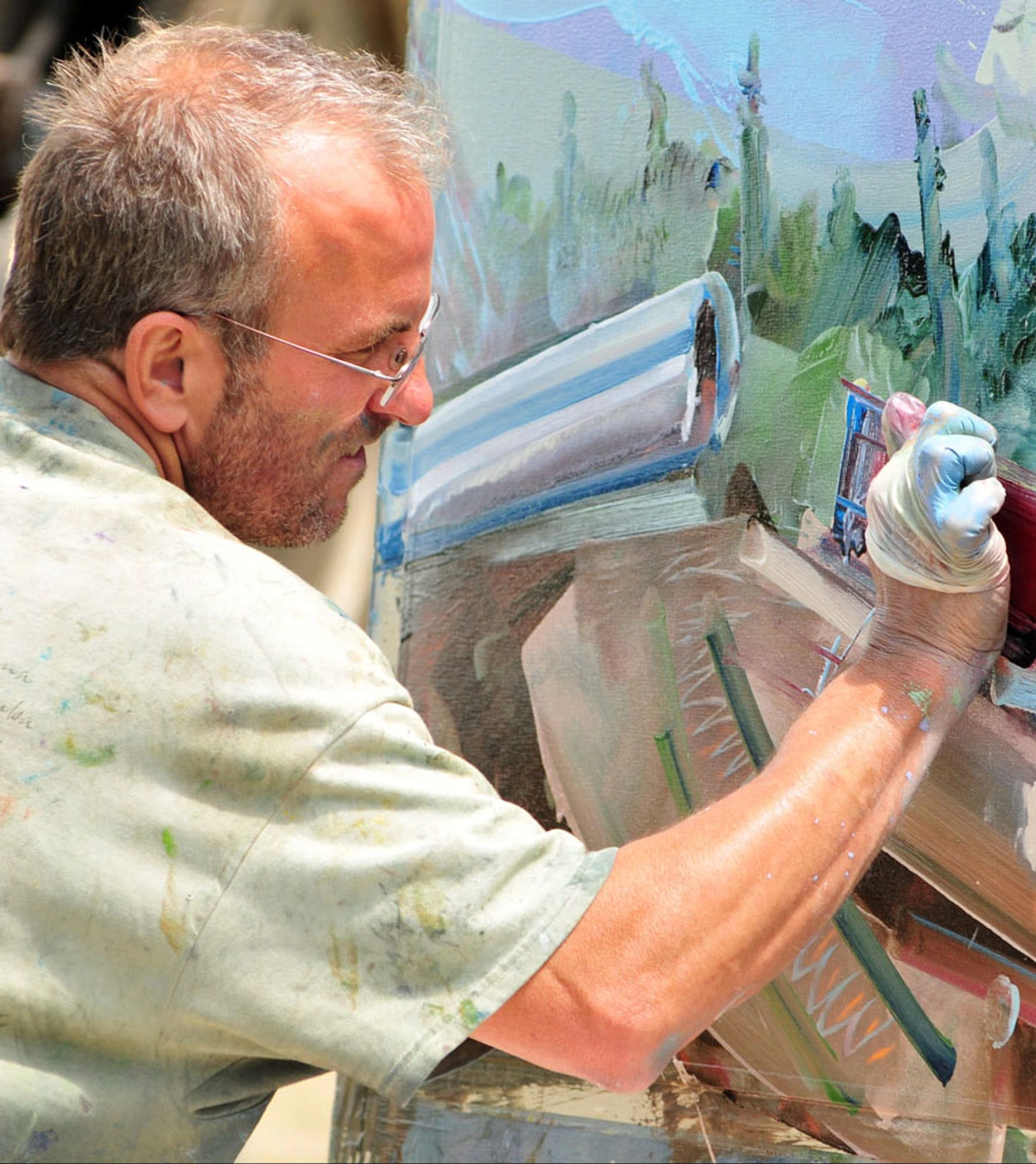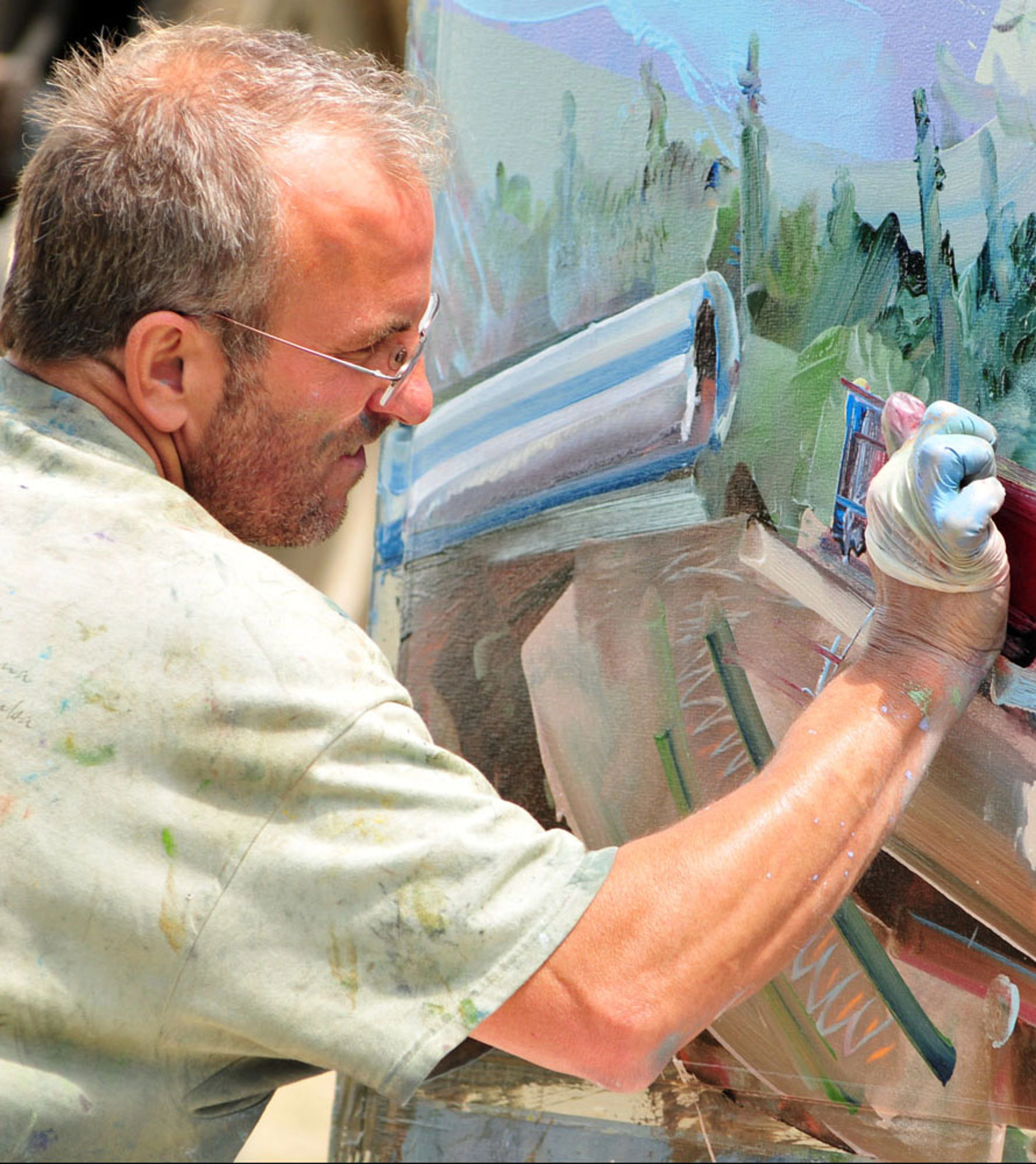
Protecting Your Art from Sunlight: An Artist's Guide to Preservation
Sunlight is art's silent enemy. Learn how UV rays, visible light, and heat cause fading and damage, which art is most vulnerable, and practical strategies like UV-filtering glass, smart placement, and archival storage to protect your cherished pieces.
Protecting Your Art from Sunlight: A Personal Plea and Practical Guide
Oh, sunlight. It's glorious, isn't it? It streams through the windows, warms the room, makes everything feel bright and alive. It's the artist's best friend when painting, revealing nuances of color you never knew existed. But here's a little secret, whispered from one art lover to another, maybe with a slightly panicked edge: sunlight is also art's silent, relentless enemy. I saw a piece I loved just... disappear, color by color, right in front of my eyes, thanks to that beautiful enemy: sunlight.
I've seen it happen. A vibrant print, full of life and energy, slowly, almost imperceptibly, loses its punch. Colors that once sang together start to fade, becoming muted, tired. It's like watching a memory slowly lose its detail. And for someone who pours their heart and soul into creating art, or who has carefully chosen pieces to fill their space (maybe even some from my own collection), the thought of that beauty diminishing is... well, it's a bit heartbreaking, isn't it?
So, let's talk about it. Not in a stuffy, museum-conservator-only way (though bless those folks, they know their stuff!), but from a personal perspective. How do we live with the art we love, display it proudly, and still keep it safe from that beautiful, yet destructive, golden light?
Why Sunlight is the Sneaky Villain
It's not just the warmth you feel on your skin. Sunlight is a complex beast, and its power comes from different parts of the spectrum. Think of it like a slow, persistent attack, chipping away at the very essence of your artwork. And crucially, this damage is cumulative. It builds up over time, meaning even seemingly harmless indirect light can cause significant deterioration over months and years.
UV Rays: The Invisible Attacker
Think of UV rays like tiny, tireless vandals. They break down the chemical bonds in pigments, paper, and other materials. This is the primary culprit behind fading. It's insidious because you don't see it happening in real-time, but over months and years, the damage accumulates. It's like a slow-motion bleaching effect, invisible until it's too late.
Visible Light: The Fading Force
Even the light you can see (Visible Light) contributes to degradation. While less damaging than UV, prolonged exposure to bright visible light can still cause colors to fade, especially in sensitive mediums like watercolors or certain dyes used in prints. Imagine leaving a brightly colored piece of fabric on a sunny windowsill – the part exposed to light will inevitably look duller than the part hidden away.
Heat: The Accelerant
Sunlight often brings Heat. Increased temperature can speed up chemical reactions, including those that cause fading and deterioration. It can also cause materials to expand and contract, leading to cracking or warping, particularly in paintings on canvas or wood panels. I once had a small, framed drawing near a window. It wasn't in direct sun all day, but it got a few hours of afternoon light. After a couple of years, I moved it, and the difference between the exposed area and the part hidden by the mat was shocking. A harsh lesson learned, and one I wouldn't wish on anyone. The heat definitely played a role in accelerating that damage.
What Art Needs Your Protection Most?
Honestly? Pretty much all art is vulnerable to light damage to some degree. But some types are far more sensitive than others. If you have any of these, pay extra attention!
- Watercolors, Pastels, and Drawings: These are often on paper, which is highly susceptible to yellowing and becoming brittle from light exposure. The pigments themselves can also be very fugitive (meaning they fade easily). Think about those beautiful, delicate washes in a watercolor – they can vanish surprisingly quickly. The type of paper matters too; papers made from wood pulp are generally more prone to yellowing and degradation than those made from cotton rag, which is naturally more stable and acid-free.
- Prints: Depending on the ink and paper used, limited edition prints or photographs can fade significantly. Vintage photographs are particularly vulnerable. Some pigments, especially older organic dyes often found in certain prints or textiles, are notoriously fugitive. Think vibrant blues, reds, and yellows that just seem to lose their intensity over time. Pigments like Alizarin Crimson, some organic yellows (like Hansa Yellow), and certain blues (like Ultramarine) can be particularly susceptible to fading in light. More modern, lightfast pigments, like those based on cadmium or cobalt, or earth tones (ochres, siennas), tend to hold up much better, but it's always a risk with prolonged exposure.
- Textiles: Tapestries, quilts, and other fiber art can suffer severe color loss and fiber degradation. The dyes used in fabrics are often highly sensitive to light.
- Photographs: Different photographic processes have vastly different sensitivities. Older processes like albumen prints or early color photographs are extremely vulnerable. Even modern chromogenic (C-prints) or inkjet prints can fade if not made with archival, lightfast inks and papers. That precious family photo or collectible print needs careful consideration.
- Oil and Acrylic Paintings: While generally more robust than watercolors or prints, the pigments can still fade over time, and the canvas or panel can be affected by heat and humidity fluctuations caused by sunlight. Even seemingly durable types of artwork like sculptures can be affected, though perhaps less dramatically than paintings or prints. Some materials might discolor or become brittle. It's also worth noting that the varnish layer on paintings, applied for protection and to enhance colors, can yellow or become brittle over time due to light exposure, potentially obscuring the artwork beneath.
So, knowing the enemy and who's most vulnerable, how do we actually fight back? It's not about living in a cave, I promise. It's about implementing smart strategies that offer layers of defense, tailored to the specific needs of your cherished pieces.
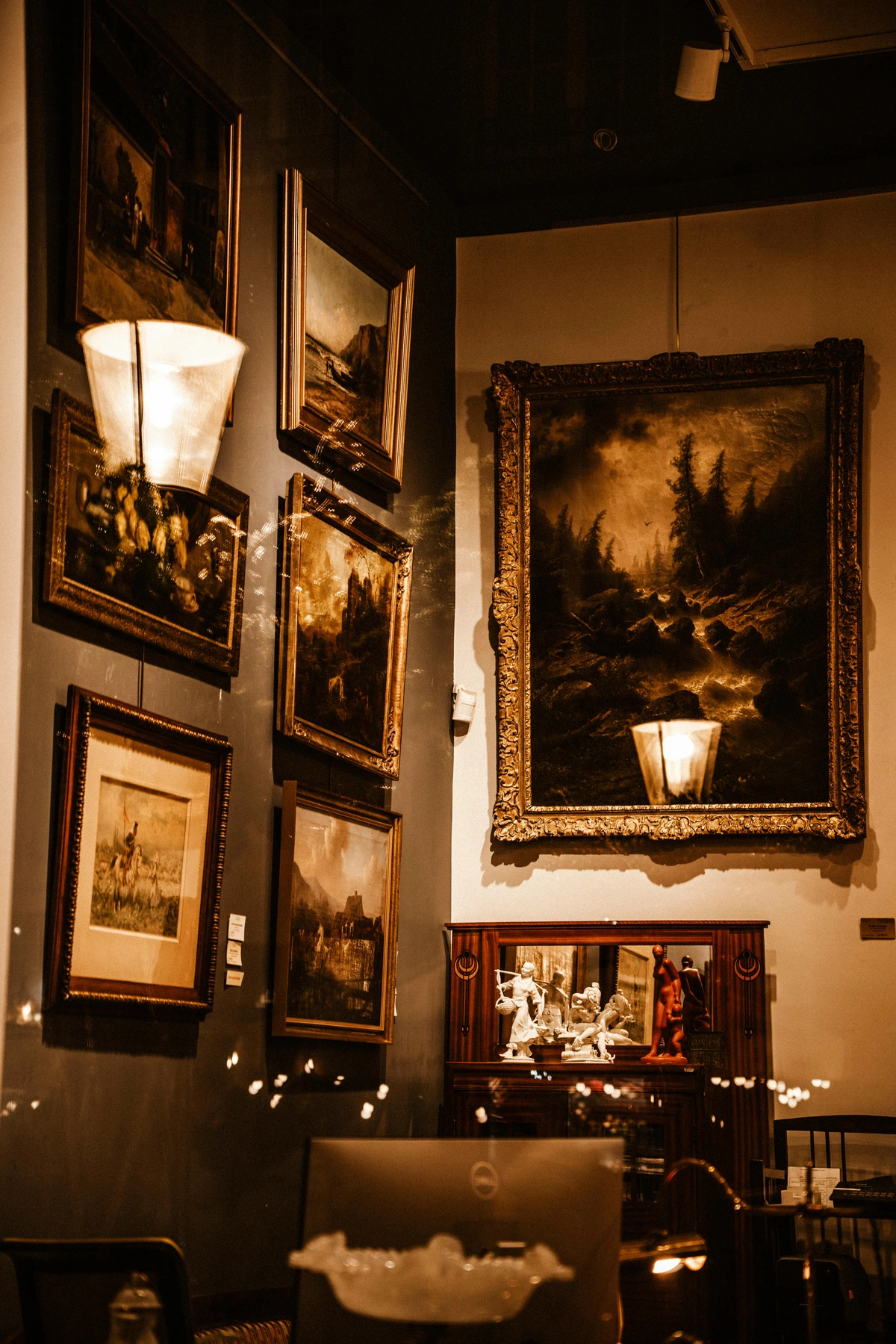
Your Shield Against the Sun: Practical Protection Strategies
Okay, so the bad news is sunlight is a threat. The good news is, you're not powerless! There are practical steps you can take to significantly reduce the risk. Think of these as layers of defense for your beloved pieces.
Location, Location, Location
This is the easiest and often most effective step. Simply avoid hanging or placing valuable or sensitive art in direct sunlight. Think about the path of the sun throughout the day and year. A wall that gets direct sun in the morning might be fine in the afternoon, and vice versa. North-facing walls in the Northern Hemisphere generally receive less direct sun, making them safer spots. Even indirect light from a bright window can cause damage over time. It's a slower process, but because damage is cumulative, it's still happening. So placing art on a wall adjacent to a window, rather than directly opposite it, is a better choice. Yes, it feels a bit like stalking the sun, but trust me, your art will thank you.
Framing: More Than Just Looks
Framing isn't just about making a piece look good on your wall. It's a crucial layer of protection. When framing, always opt for UV-filtering glass or acrylic. This material is specifically designed to block a significant percentage of harmful UV rays – often 97% or more. There are different types: 'Conservation Clear' blocks UV, while 'Museum Glass' or 'Museum Acrylic' offers UV blocking plus anti-reflective properties, making the art easier to see. It's a bit more expensive than regular glass, but it's a worthwhile investment for anything you care about preserving. After seeing that drawing fade, I wouldn't frame anything important without at least Conservation Clear. How can you tell if existing glass is UV-filtering? Sometimes there's a small sticker from the framer, or if you had it done recently, you can ask them. Without documentation, it's hard to be certain, but assume standard glass offers little protection. Using acid-free mats and backing is also essential to prevent the paper or canvas from degrading over time, but that's a complex topic in itself (or maybe you can check out this guide to framing!).
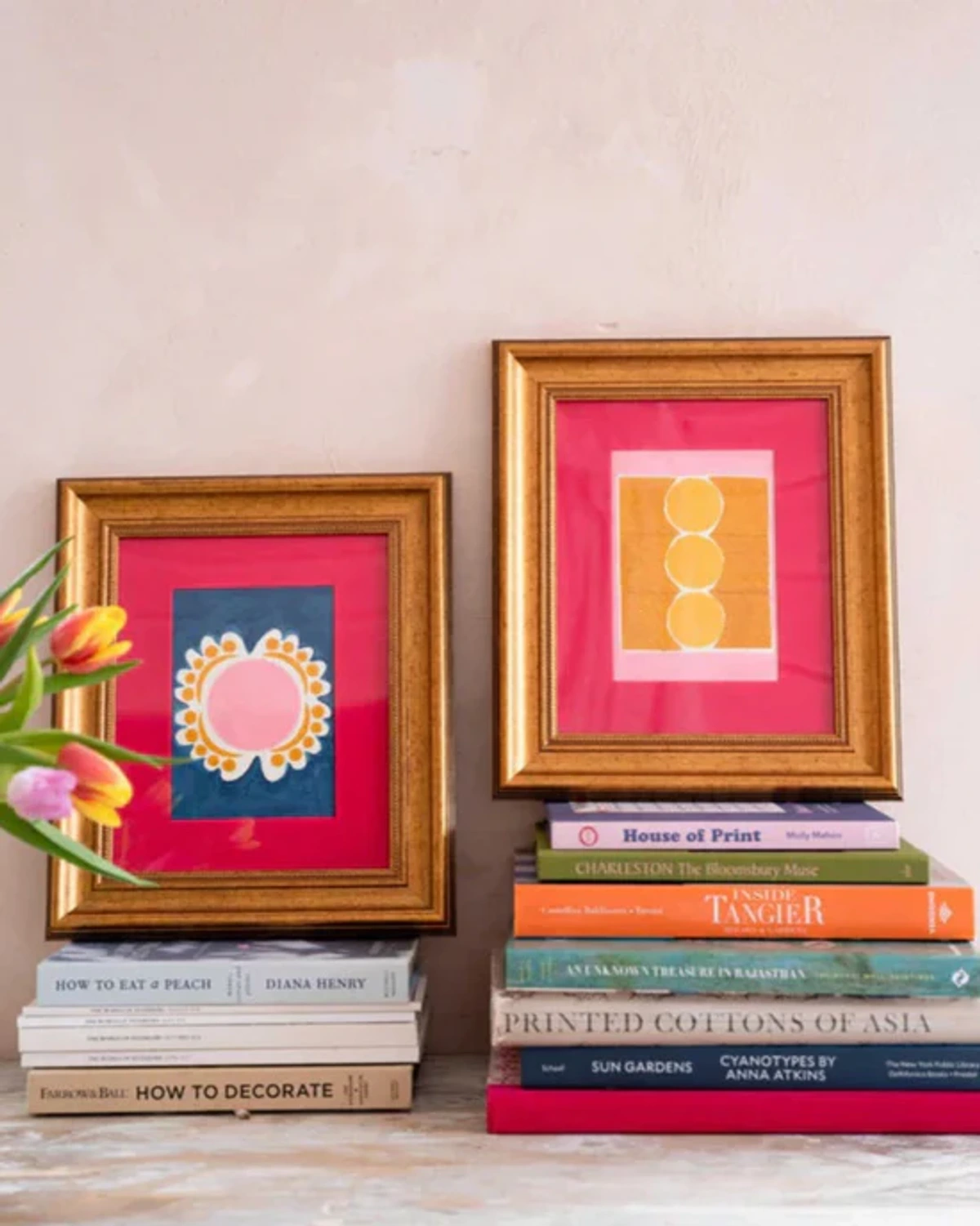
Window Treatments: Blocking the Rays
Your windows are the gateway for light. Controlling what comes through them is key. Simple solutions include:
- Curtains and Blinds: Keep them closed during the sunniest parts of the day, especially in rooms with vulnerable art. Sometimes the simplest solutions are the best, even if they mean saying goodbye to that perfect sunbeam on your rug for a few hours.
- UV-Filtering Window Film: This is a more permanent solution. Films can be applied directly to the window glass and block UV rays while still allowing visible light to enter. Some are clear, while others offer tinting or privacy. This is a great option if you want to maintain natural light but reduce the harmful effects. I've considered this for my studio, but honestly, the thought of applying it perfectly without bubbles feels like a bigger challenge than finishing a large painting!
Understanding Light Levels
For the truly dedicated (or slightly obsessive, like me sometimes!), you can get more technical. Light intensity is measured in lux (or foot-candles). To give you perspective, a bright sunny day outside can be 50,000 to 100,000 lux, while typical indoor lighting might be a few hundred lux. Museums often keep light levels quite low for sensitive works, sometimes below 50 lux. You can buy simple light meters or even use smartphone apps to get a rough idea of the light levels in your space. While you don't need museum-level control at home, being aware of just how bright a spot is can help you make better decisions. Some meters can also measure UV output, giving you an even clearer picture of the risk.
Other Light Sources
While sunlight is the main culprit, it's worth a quick note on other light. Older fluorescent lights can emit UV radiation because of the way they generate light using mercury vapor and phosphors. Halogen bulbs produce a lot of heat, which, as we discussed, is also bad for art as it accelerates degradation. Modern LED lights are generally the safest option for illuminating art, as they emit very little UV and significantly less heat than older bulbs. If you're lighting your art directly, LEDs are the way to go.
Environmental Control
While not solely about sunlight, maintaining stable temperature and humidity levels is important for art preservation. Sunlight can cause fluctuations, especially near windows, leading to expansion and contraction of materials. Controlling the environment helps mitigate that risk. (We have a whole guide on art care if you want to dive deeper!).
Rotating Your Art
This might sound like a hassle, but if you have pieces you absolutely adore and want to display, consider rotating them. Keep them in a less exposed location for part of the year, or even store them safely for periods. This limits the cumulative exposure. It also gives you a chance to refresh your space and appreciate different pieces! It sounds like work, I know, but I've found rotating pieces actually makes me appreciate them anew when they come back out.
Protecting Art in Storage
It's not just about what's on your walls. Art spends a lot of time in storage, and it needs protection there too. Always store art in a cool, dry place away from direct sunlight or fluctuating temperatures. Use archival quality materials like acid-free tissue paper or sleeves, and store flat or upright depending on the medium. Archival sleeves or folders are particularly useful for unframed prints, photos, or drawings, protecting them from ambient light and dust even when stored in drawers or boxes that might be opened occasionally. Never wrap art directly in plastic, as this can trap moisture and encourage mold growth, another enemy of art.
When Damage Has Already Occurred
Sometimes, despite our best efforts, or perhaps before we knew better, art gets damaged by light. Fading is often irreversible. Once those chemical bonds in the pigments are broken, the color is gone. However, for valuable pieces, a professional art conservator might be able to help stabilize the work, clean it, or offer advice on preventing further damage. Knowing when to restore artwork is a complex topic in itself, but it's worth being aware of the option.
My Final Thoughts: Love Your Art, Protect Its Future
Protecting your art from sunlight isn't about living in a dark, dreary house. It's about being mindful and taking simple, preventative steps to ensure the beauty you've brought into your life lasts as long as possible. It's about respecting the materials, the artist's intent, and the emotional connection you have to the piece.
Whether it's a priceless masterpiece or a print that just makes you happy every time you see it (like maybe something you found while buying art online), it deserves to be cared for. A little bit of planning goes a long way in preserving those colors, those details, those stories, for years to come.
This mindful approach to preservation is something I think about constantly, both in my own studio practice and when I encounter art in the world. Seeing how light interacts with form and color, and understanding its potential impact, is part of my ongoing artist's journey. It's also something I've learned from visiting incredible institutions like my museum in 's-Hertogenbosch, where the care taken to preserve art for future generations is truly inspiring. Giving your art that care is an act of preserving not just the art itself, but the story it tells in your home and the inspiration it provides.
So go on, enjoy the sunlight! Just maybe give your favorite painting a little shade, or a nice UV-filtering frame. It'll thank you for it, silently, by staying vibrant and beautiful. Take a look around your space today. Which piece is asking for a little extra love and protection?
